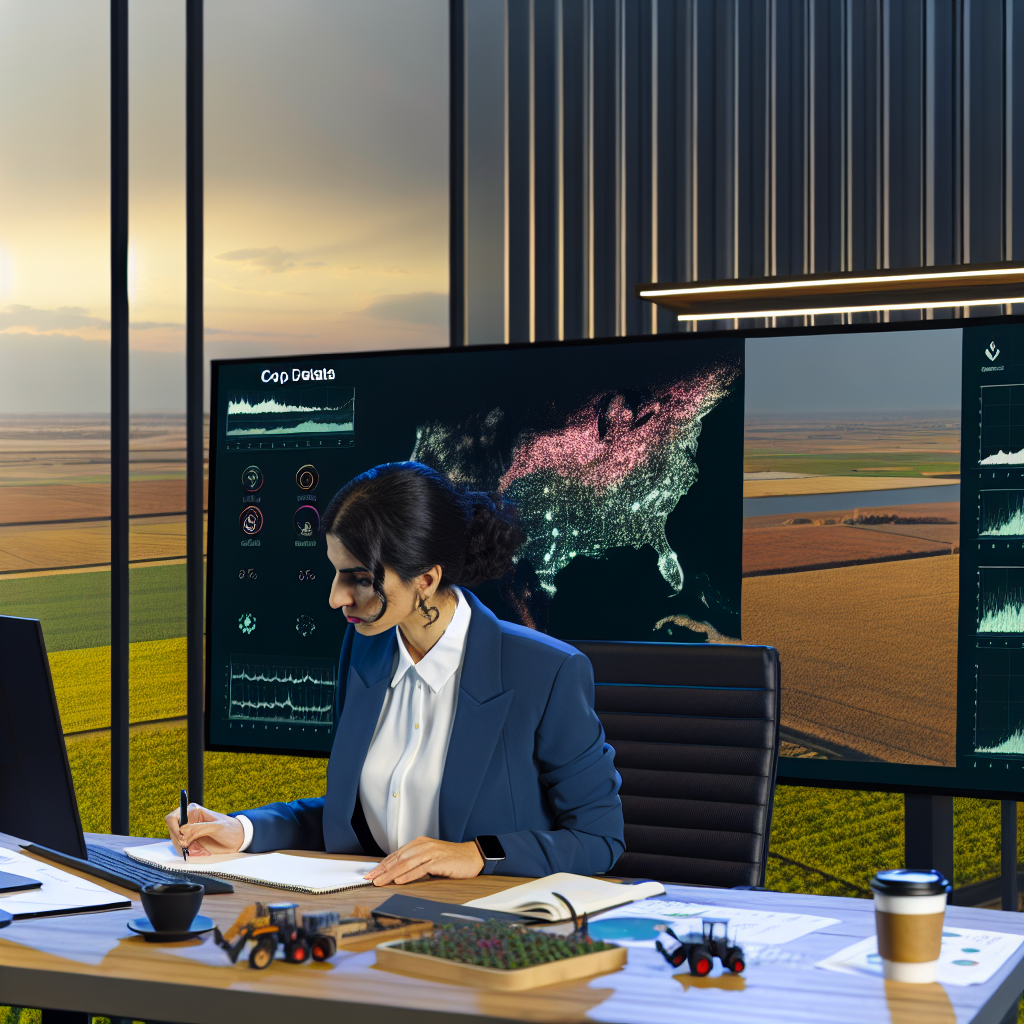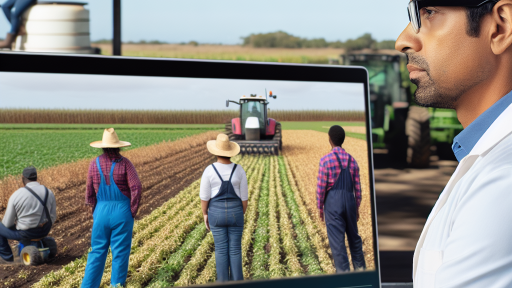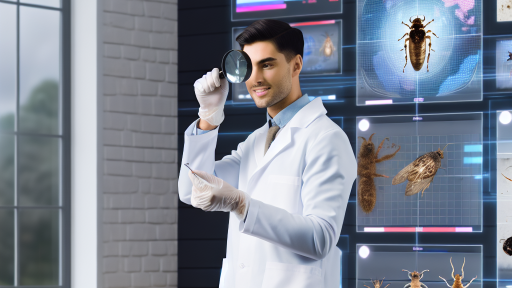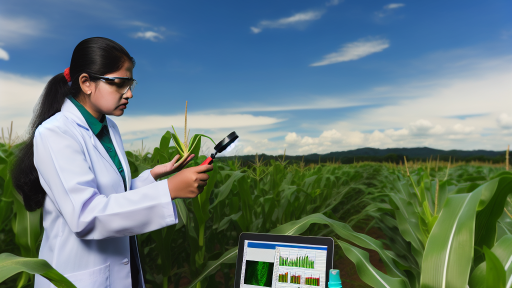The Role of IoT in Crop Monitoring
Current Applications of IoT in Agriculture
The Internet of Things (IoT) has transformed agricultural practices significantly.
Farmers now utilize connected devices for real-time crop monitoring.
Sensors measure soil moisture levels, ensuring optimal irrigation.
Moreover, drones capture aerial images to assess crop health.
This technology allows for precise data collection and analysis.
Farmers gain insights into plant growth and potential issues.
As a result, they can make informed decisions quickly.
Benefits of IoT in Crop Monitoring
Implementing IoT offers numerous advantages to agriculture.
First, it improves resource management considerably.
Water usage becomes more efficient, reducing waste and costs.
Next, it enhances productivity through timely interventions.
Additionally, farmers can predict yields more accurately using data analytics.
This leads to better planning and market strategies.
Future Prospects for IoT in Agriculture
Looking ahead, IoT’s impact will likely grow even more profound.
Integration with artificial intelligence could further enhance crop monitoring.
Transform Your Agribusiness
Unlock your farm's potential with expert advice tailored to your needs. Get actionable steps that drive real results.
Get StartedAI can analyze vast datasets to refine farming techniques.
Also, more advanced sensors will provide even greater insights.
Farmers will leverage real-time data to respond swiftly to environmental changes.
Consequently, sustainable practices may become the norm in agriculture.
Challenges to Overcome
Despite its potential, IoT in agriculture faces challenges.
Data security remains a significant concern for many farmers.
Furthermore, the initial investment for IoT technology can be high.
Also, there is a need for comprehensive training for users.
Addressing these challenges will be essential for widespread adoption.
Implications of IoT in Agriculture
In summary, the role of IoT in crop monitoring is substantial and evolving.
Current applications showcase its benefits and potential for future growth.
However, overcoming challenges will be crucial for maximizing its impact.
Utilizing AI and Machine Learning for Predictive Crop Analytics
Introduction to Predictive Analytics
Predictive analytics transforms agricultural practices significantly.
It leverages data to forecast crop yields and health issues.
Farmers can enhance decision-making through these insights.
Role of AI in Crop Monitoring
Artificial intelligence plays a crucial role in modern agriculture.
It processes vast amounts of data quickly and accurately.
AI algorithms identify patterns that human eyes might miss.
This technology enables timely interventions in crop management.
Machine Learning for Data Handling
Machine learning enhances predictive models for crops.
It learns from historical data to improve future predictions.
With continuous learning, these models adapt to new conditions.
Farmers gain valuable insights to optimize crop management.
Benefits of Predictive Crop Analytics
Predictive analytics offers numerous advantages for agriculture.
Showcase Your Farming Business
Publish your professional farming services profile on our blog for a one-time fee of $200 and reach a dedicated audience of farmers and agribusiness owners.
Publish Your Profile- It reduces waste by optimizing resource usage.
- Farmers can anticipate market demands more effectively.
- It enhances crop health monitoring through data-driven insights.
- Farmers mitigate risks related to climate change.
Challenges in Implementation
Despite its benefits, challenges persist in implementing these technologies.
Data privacy concerns may hinder the sharing of information.
Additionally, the initial investment costs can be high.
Farmers must also adapt to new technologies and workflows.
Future Directions for AI and Machine Learning
Going forward, innovations in these technologies will evolve.
Improvements in sensor technology will enhance data collection.
AI models will become more sophisticated and user-friendly.
Ultimately, these advancements will empower farmers globally.
Integration of Drones in Agriculture: Enhancing Crop Surveillance and Data Collection
Overview of Drone Technology in Agriculture
Drones are transforming agricultural practices worldwide.
They enable farmers to monitor their fields more effectively.
Additionally, drone technology provides real-time data collection.
Benefits of Using Drones for Crop Monitoring
Drones offer numerous advantages for farmers.
They increase efficiency in crop surveillance.
Furthermore, drones reduce labor costs associated with manual inspections.
They also provide high-resolution aerial imagery.
This imagery aids in assessing crop health accurately.
Types of Drones Used in Agriculture
Various drones cater to different agricultural needs.
Fixed-wing drones cover large areas efficiently.
Multi-rotor drones excel at detailed inspections.
Hybrid drones combine the benefits of both types.
Each type serves unique purposes in crop monitoring.
Data Collection and Analysis
Drones collect data using advanced sensors and cameras.
They capture valuable information about soil conditions.
This data aids in understanding moisture levels and nutrient availability.
Farmers can analyze this information for better decision-making.
Real-Life Applications of Drones in Agriculture
Many farmers are already using drones in innovative ways.
Drones assist in planting seeds in hard-to-reach areas.
They help detect pests and diseases early.
Furthermore, drones facilitate precise pesticide and fertilizer application.
Future of Drones in Crop Monitoring
The future of drone technology in agriculture looks promising.
Advancements will enhance their capabilities and applications.
For instance, artificial intelligence may play a significant role.
This will improve data analysis and decision-making processes.
Challenges and Considerations
Despite their advantages, drones face challenges.
Regulatory hurdles can impact their use in agriculture.
Additionally, data security and privacy concerns must be addressed.
Farmers need to stay informed about emerging regulations.
Implications of Drone Technology for Agriculture
Integrating drones into agricultural practices provides immense benefits.
They enhance surveillance and streamline data collection.
As technology evolves, drones will become more indispensable.
Showcase Your Farming Business
Publish your professional farming services profile on our blog for a one-time fee of $200 and reach a dedicated audience of farmers and agribusiness owners.
Publish Your ProfileExplore Further: Preventing Post-Harvest Losses on the Farm
Advancements in Remote Sensing Technologies for Precision Agriculture
Introduction to Remote Sensing
Remote sensing revolutionizes how farmers monitor crops.
This technology uses satellites and drones to collect data.
It provides real-time insights into crop health and conditions.
Benefits of Remote Sensing
Farmers gain numerous benefits from remote sensing technologies.
First, it enhances precision in resource management.
This technology aids in optimized irrigation practices.
Additionally, it allows for better pest and disease control.
Farmers can identify issues early and respond effectively.
Emerging Technologies
Several emerging technologies are shaping this field.
Artificial intelligence enhances the analysis of remote sensing data.
Machine learning algorithms improve data accuracy and predictions.
Moreover, hyperspectral imaging captures detailed information.
This technology detects subtle changes in crop health.
Integration with IoT
Integrating remote sensing with IoT devices adds significant value.
IoT sensors on farms collect complementary data.
This combination leads to more informed decision-making.
For example, soil moisture sensors work with satellite data.
The result is optimized irrigation and reduced water waste.
Future Directions
The future of remote sensing in agriculture looks promising.
Scientists are developing drones with advanced analytics capabilities.
These drones will provide even more detailed insight.
Furthermore, collaborations between tech companies and farmers are increasing.
This partnership drives innovation and successful implementation.
You Might Also Like: Economic Advantages of Efficient Post-Harvest Practices
The Importance of Big Data in Crop Analysis
Defining Big Data in Agriculture
Big data refers to large volumes of data generated daily in agriculture.
It includes data from various sources like sensors, satellites, and machinery.
Farmers can analyze this data for informed decision-making.
Enhancing Crop Yield
Big data analytics provides insights into crop health and growth patterns.
Farmers can identify areas needing attention to maximize yields.
Furthermore, they can optimize resource use, reducing waste.
Improving Sustainability
Data helps farmers practice sustainable agriculture effectively.
They can monitor water usage and soil health more efficiently.
Consequently, this leads to better environmental stewardship.
Precision Agriculture
Big data enables precision agriculture techniques.
GPS technology and data analytics work together to enhance farming precision.
Farmers can apply inputs like fertilizers more accurately.
Data-Driven Decision Making
Data analytics supports predictive modeling for various agricultural scenarios.
This modeling aids farmers in anticipating issues before they arise.
As a result, they can implement timely interventions effectively.
Showcase Your Farming Business
Publish your professional farming services profile on our blog for a one-time fee of $200 and reach a dedicated audience of farmers and agribusiness owners.
Publish Your ProfileCase Studies of Successful Implementation
Many farms are successfully using big data for better productivity.
For instance, GreenFields Farm utilizes AI to monitor crop health.
Another example is FreshHarvest, which applies data analytics to enhance irrigation practices.
- GreenFields Farm increased yields by 20% using big data analytics.
- FreshHarvest reduced water usage by 30% through data-driven irrigation.
Future Prospects of Big Data in Agriculture
The role of big data in agriculture will continue to grow.
Future technologies promise even deeper insights for farmers.
Continuous innovations will enhance the efficiency of crop monitoring.
See Related Content: Weed Management Strategies for Organic Farmers

Sustainable Practices in Crop Monitoring: Balancing Technology and Environment
Integrating Technology with Nature
Modern agriculture increasingly relies on technology.
This integration helps optimize crop monitoring efforts.
Furthermore, it addresses environmental concerns effectively.
Utilizing Data Analytics
Data analytics plays a crucial role in sustainability.
Farmers can analyze soil health and weather patterns.
As a result, they can make informed decisions quickly.
Emphasizing Precision Agriculture
Precision agriculture is transforming traditional farming practices.
This method involves monitoring crops in real-time.
Farmers apply resources more efficiently, reducing waste.
Adopting Remote Sensing Technologies
Remote sensing technologies enhance crop monitoring significantly.
Drones and satellites provide critical insights into field conditions.
Additionally, they help identify crop stress areas promptly.
Promoting Eco-Friendly Practices
Eco-friendly initiatives reduce the environmental impact of farming.
Examples include reducing chemical usage and minimizing soil disturbance.
Farmers are increasingly adopting organic methods as well.
Encouraging Collaborative Efforts
Collaboration between farmers and tech companies fosters innovation.
Strategic partnerships enhance the development of sustainable solutions.
Consequently, they can lead to more resilient agricultural systems.
Addressing Climate Change
Climate change poses significant challenges to agriculture.
Adaptive technologies help mitigate these impacts on crops.
Moreover, they support farmers in managing their resources effectively.
Educating Farmers on Sustainable Practices
Education is key to successful sustainability adoption.
Workshops and training sessions empower farmers with knowledge.
This leads to better crop management and environmental stewardship.
Delve into the Subject: Enhancing Crop Yield With Disease Forecasting Techniques
Future Technologies in Soil Health Monitoring
Emerging Technologies
Innovations continue to transform soil health monitoring methodologies.
For instance, remote sensing technologies provide real-time data on soil conditions.
Moreover, drones are increasingly used to assess crop health and soil variability.
This technology allows farmers to pinpoint areas needing attention quickly.
Additionally, satellite imagery enhances understanding of broader agricultural trends.
Data Analytics Integration
Data analytics plays a crucial role in modern crop management.
Farmers leverage analytics to interpret soil health metrics effectively.
By utilizing machine learning, predictions about soil behavior become more accurate.
Showcase Your Farming Business
Publish your professional farming services profile on our blog for a one-time fee of $200 and reach a dedicated audience of farmers and agribusiness owners.
Publish Your ProfileFurthermore, data visualization tools present complex information clearly.
This empowers farmers to make informed decisions regarding their soil and crops.
Biological Soil Monitoring
Biological indicators are essential in assessing soil health.
Microbial activity informs about nutrient cycling and soil resilience.
Furthermore, integrating biological data leads to a holistic understanding of ecosystems.
Technologies such as biosensors simplify the monitoring of microbial populations.
Collaborative Platforms
Collaboration enhances the effectiveness of soil health monitoring efforts.
Farmers, scientists, and agronomists can work together via digital platforms.
These collaborations promote knowledge sharing and innovation.
Furthermore, community-driven data collection assists in understanding local conditions.
Sustainable Solutions
Future trends prioritize sustainable practices in agriculture.
Technologies focus on reducing chemical inputs while maintaining productivity.
For example, precision agriculture aims to optimize resource usage based on data.
This approach leads to improved soil health and crop yield.
The Impact of Blockchain on Transparency and Traceability in Crop Management
Enhanced Traceability
Blockchain technology offers a secure way to track crops from farm to table.
Each step in the supply chain becomes traceable, ensuring accountability.
Farmers can record planting and harvesting dates on a tamper-proof ledger.
Consequently, buyers gain confidence in the authenticity of their purchases.
For instance, consumers can verify the origin of their food products.
Transparency Through Smart Contracts
Smart contracts automate transactions based on predefined conditions.
This technology reduces paperwork and increases efficiency in the supply chain.
With smart contracts, farmers receive payments instantly upon delivery confirmation.
Additionally, it diminishes disputes and enhances transparency among stakeholders.
Boosting Consumer Trust
Consumers increasingly demand transparency regarding food sources.
Blockchain satisfies this need, providing detailed product histories.
By seeing the journey of their food, consumers feel more connected to producers.
For example, companies like Provenance use blockchain for food traceability.
This establishes trust, leading to increased customer loyalty and sales.
Challenges to Adoption
Despite its advantages, implementing blockchain poses challenges for farmers.
Many lack technical knowledge about the technology.
Additionally, the initial costs of setting up blockchain systems can be high.
However, educational initiatives can help to overcome these barriers.
Future Prospects
The future of crop management looks promising with blockchain technology.
As more stakeholders embrace this technology, its benefits will grow.
Furthermore, collaborations among agricultural companies can enhance progress.
This could lead to more sustainable practices across the entire industry.
Additional Resources
Precision Agriculture in the Digital Era: Recent Adoption on U.S. Farms
Precision Agriculture: Benefits and Challenges for Technology …




